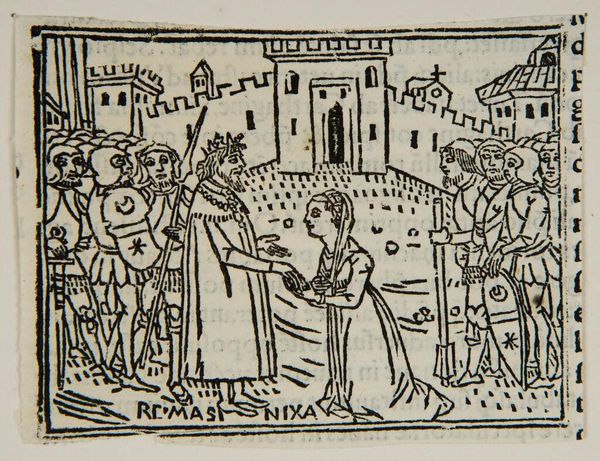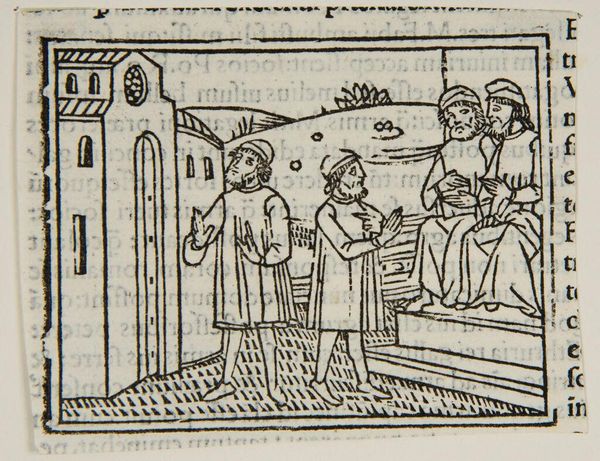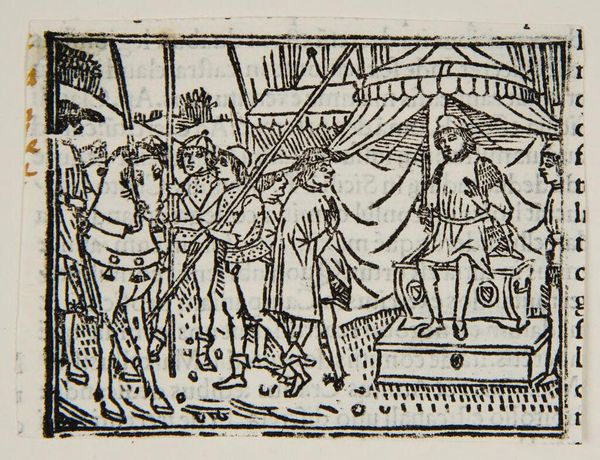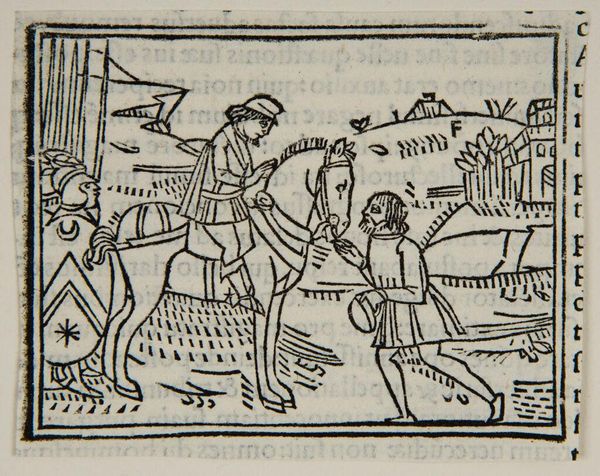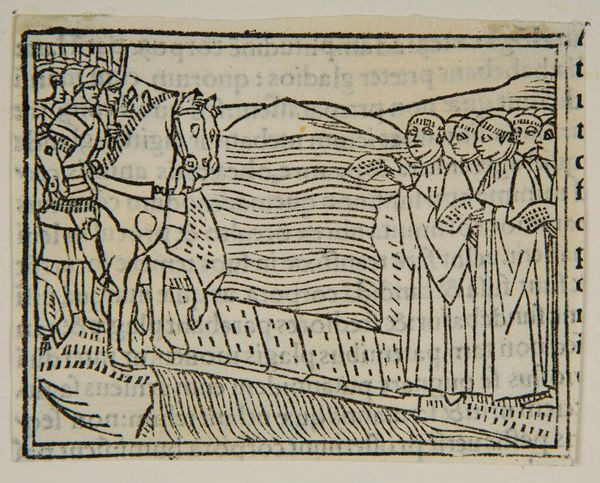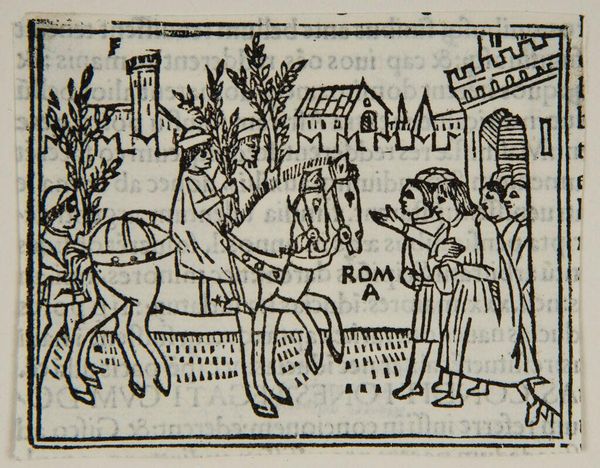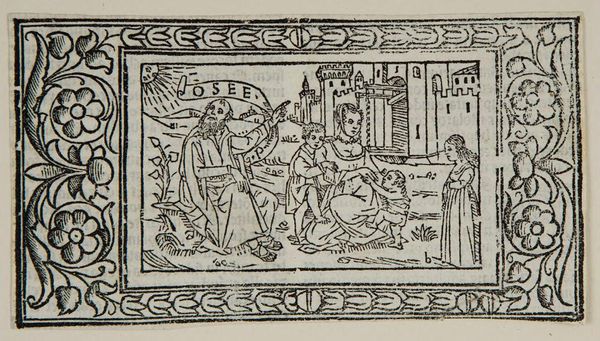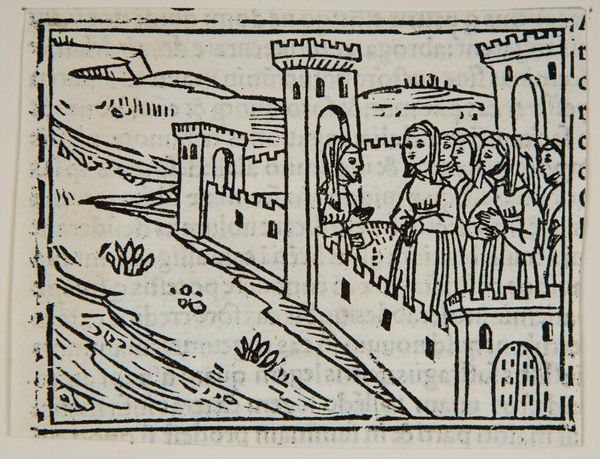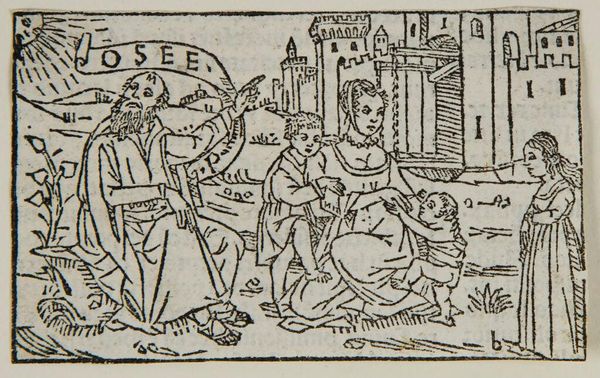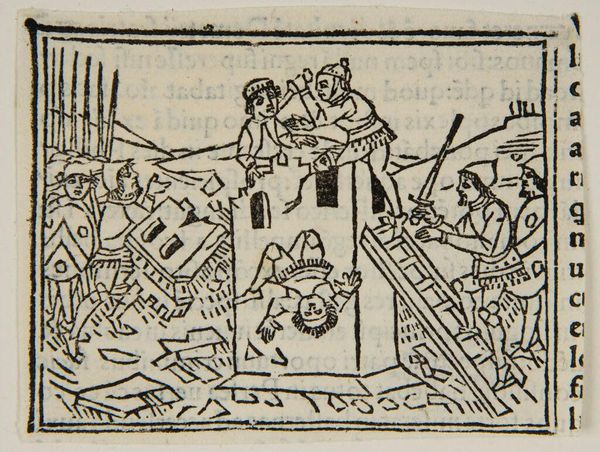
Book XXVII.51. Hasdrubal defeated by Marcus Livius and Cladius Nero; his head is thrown before African prisoners {Tertiae Decadis Liber Septimus p. CLVIII} 1493
0:00
0:00
Copyright: CC0 1.0
Editor: This is an anonymous woodcut titled *Book XXVII.51. Hasdrubal defeated by Marcus Livius and Cladius Nero; his head is thrown before African prisoners*. The scene is stark, with that severed head so prominently displayed. What strikes you about the politics of imagery here? Curator: Well, this image visualizes power dynamics and conquest. The act of displaying Hasdrubal's head isn't just about victory; it's a calculated spectacle. How does the artist use composition to emphasize the power imbalance? Editor: The positioning of the head between the prisoners and the victorious soldiers creates a striking visual separation, amplifying the victors' dominance. It's a public declaration of power. Curator: Exactly. These images, part of larger historical texts, reinforced narratives of Roman supremacy and justified colonial expansion. It makes you consider the role of art in shaping public perception of power, doesn't it? Editor: It certainly does. I hadn't considered the propagandistic function so explicitly. Curator: Art often plays a role in the theatre of power.
Comments
No comments
Be the first to comment and join the conversation on the ultimate creative platform.
